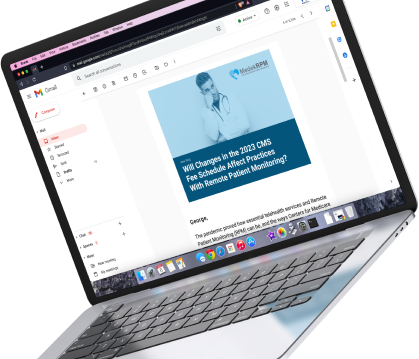
In 2019, the American Heart Association (AHA) unveiled a comprehensive report championing the merits of Remote Patient Monitoring (RPM) for individuals grappling with cardiovascular ailments1. This commendation wasn't just a passing nod; it spotlighted RPM's evolving role in revolutionizing cardiac care.
Elevating Patient Autonomy and Engagement
The journey to sound health begins with an empowered patient. The AHA recognizes the sheer potential of RPM in amplifying patient autonomy. Equipped with real-time insights into their own health metrics, patients can seamlessly conform to physician-prescribed regimens, medications, and even lifestyle alterations. As the AHA emphasizes:
“...increase access to and incentivize...evidence-based remote patient monitoring technologies.”1
Crafting a New Age Doctor-Patient Relationship
Traditional healthcare often falls short in offering a continuous dialogue between patients and doctors. RPM bridges this gap. With the possibility of daily health readings, physicians are not just confined to intermittent health snapshots. They can actively monitor patient health, making real-time interventions a tangible reality.
The increased frequency of health readings also nurtures a more intimate and informed doctor-patient dynamic. Instead of a handful of annual readings, cardiologists now have access to a year-long health diary. It’s this prolific data that can pinpoint anomalies before they escalate into serious conditions.
Economic Feasibility with Enhanced Health Metrics
The escalating financial burden of healthcare is a global concern. Herein lies the beauty of RPM—it marries enhanced health outcomes with economic sensibility. Notably, with significant reductions in hospital readmissions, the economic merit of RPM is hard to overlook.
Bridging Data Accessibility for Patients and Caretakers
Strict regulations like HIPAA have often been roadblocks in information sharing, especially when caregivers are in the picture. RPM provides a practical solution to this dilemma. By democratically offering patients autonomy over their health data, RPM ensures they can effortlessly share crucial health metrics with caregivers when necessary.
RPM's Crusade Against Cardiovascular Diseases
Hypertension is a silent adversary, lurking behind the scenes for a staggering 35% of American adults. In this scenario, RPM acts as a vigilant guardian. By facilitating daily blood pressure logs, it makes the once-daunting task of hypertension management achievable.
Similarly, Heart Failure (HF) remains a global challenge. The early detection prowess of RPM ensures timely interventions, making cardiac care more proactive than reactive.
However, like any budding innovation, RPM's efficacy in some domains, especially when compared to traditional in-office visits, requires further elucidation. The consensus is that while RPM is a beacon of convenience, its absolute superiority in some areas is yet to be determined.
RPM stands at the forefront of a healthcare revolution, blending technology with genuine patient care. While the journey of understanding its full potential is ongoing, its current benefits are undeniable.
Considering integrating RPM into your healthcare framework? Experts at Medek RPM are at your service, ready to illuminate the path forward.
Chat with a Medek RPM consultant today and embrace the future of cardiac care.
Footnotes:





